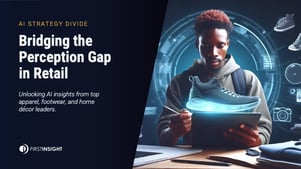Although it may appear that sustainability and ethical consumption have been front-page news for a long time, a set of quantifiable business goals by which to distinguish the good people from the bad ones - known as ESG - has only been in place for a few years.
The ESG movement has had a huge influence on the retail industry during the last two years.
Across the board, minimum salaries have risen. Following claims and, in some cases, proof that Burberry and many other brands and retailers were destroying returns and surplus inventory, corporations now have pursued big efforts to decrease energy usage, waste, and other environmental factors to meet customer demands.
Consumers with a great deal of wealth rushed to funds that claim to invest solely in firms that follow ESG guidelines. According to Morningstar, assets held in ESG funds increased by 50% in 2021 to $2.7 trillion, a 50% rise over 2020. Wall Street businesses were delighted to comply, rebranding and introducing new budgets for ESG-related initiatives.
Sustainability-driven investment, like cryptocurrency, is a concept that no one can precisely define. Our recent sustainability report, The State of Consumer Spending, UK Sustainability showcases that internationally there is a disconnect on how sustainability is defined. According to the results, a majority (49%) of UK consumers describe sustainability as “products made from recycled, sustainable, and natural harvested fibers and materials.” Likewise, a majority (45%) of US consumers defined it exactly the same way.
With the world is stumbling under persistent inflation, war, and a pending recession, how can retailers keep sustainability a high priority? Even during economic disruption, retail businesses are attempting to adjust transparency standards and other criteria.
To illustrate, the California government established a law last year that prevents manufacturers and brands from violating labor laws in the workplace. New York policymakers are considering a bill that would require companies to produce verifiable reports on at least half of their supply chains - from the cotton farm to the mill to the dock to the workroom and, finally, to the retail shelf.
According to recent research by McKinsey & Company, the increased expenditure of all of this would create a 15% rise in yearly capital budgets for retailers over the next five years, as well as a nearly 8% increase in the cost of goods sold.
The ESG-Industrial complex, like crypto, is now getting a "serious wake-up call."
That's how a former corporate executive at a Deutsche Bank subsidiary described her disclosures regarding her former employer's 2020 annual report's deceptive ESG declarations. "I still believe in sustainable investment," whistleblower Desiree Fixler told the Financial Times recently, "but the bureaucrats and marketers took over ESG, and now it's been diluted to a condition of meaninglessness."
These financial market trends will have a significant influence on the retail industry, particularly private equity-backed businesses. Private equity has been playing an increasingly important role in the purchase, financing, and dismantling of brands for more than a decade. According to 2019 research by The Stakeholder Project, private equity-owned firms are "twice as likely to go bankrupt as public corporations," with private equity-owned companies accounting for 10 of the 14 major retailer bankruptcies between 2012 and 2019.
With increasingly stringent ESG and sustainability regulations expected to develop throughout the world, the retail industry's capital allocation will diminish. However, with that stated, companies will face even greater pressure in terms of sustainability activities because of doing what consumers say they want: MORE.
Who pays for it is an unavoidable question?
The dilemma for a retailer or brand at the operational level is: "How can we shift the burden onto consumers?" After all, the consumer must be willing to pay for it at the end of the day.
Interesting in selling more and wasting less?














